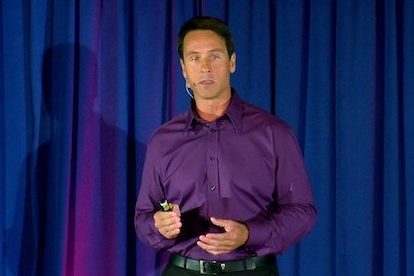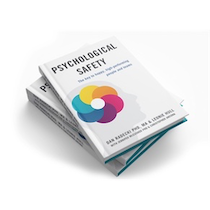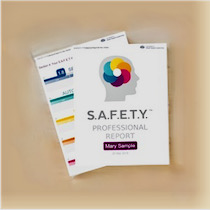Brain Wars: Hillary vs Donald
As an engineer with a strong business background, I typically write about business and management topics where a data-driven engineering and scientific approach may provide a bias breaking paradigm. When uncovering this data-driven paradigm, I never know what we will find. Sometimes the results confirm what we already know, sometimes it helps select the best option from a large selection of options, and sometimes it leads to new and unforeseen ways to solve problems.
Last week, I decided to apply the neuroscience based S.A.F.E.T.Y.™ lens (from the Academy of Brain-Based Leadership) to Donald Trump’s acceptance speech to see how the tools transferred over from business to politics. After doing this for Trump, I promised to do the same to Hillary’s speech after the Democratic Convention. I also added some analysis on Jill Stein (Green Party) and Gary Johnson (Libertarian Party) since these two candidates can have a significant impact on the election outcome this year. Let’s see what the neuroscience tools can tell us about this election.
I followed the same process to break down the acceptance speeches of Hillary Clinton and Jill Stein as I used for Trump (read about it here). However, for Gary Johnson, a similarly styled acceptance speech was not available to compare, so I used some of his main points in on screen interviews which he did after his nomination as the Libertarian Party Candidate.
This analysis of speeches turned out quite interesting as all candidates appealed to multiple and different brain-based triggers yielding insights into the strategic layout of the campaign landscape. Trump’s speech, more than any other candidate, directly targeted the brain’s emotional circuitry. His words, appeal, facial expressions, vocal intonations, and body language seem perfectly designed to target deep seated human based emotions and fears. This analysis is supported by another study done by Sam Barnett, a hedge fund manager and PhD student in Neuroscience who measured people’s brains while watching the primary debates. He found that Trump caused more activation in the brain than any other candidate. Trump’s approach has implications which extend to the candidates funding needs. I would guess Trump will need to spend significantly less than any other candidate including Hillary to capture the same mind space.
Last week, when the analysis of Trump’s speech was completed, we found that his speech was mostly negative and hit on Trust with the negativity projected at both Hilary Clinton and the establishment while the positive was projected mostly at himself. We were surprised that he did not strongly focus on the Security trigger since he tends to come across strong on that trigger. Instead he focused on the Esteem trigger in a very similar way as a get rich quick scheme works, and unfortunately for him, the same as many fascists and dictators around the world have used. Regarding Hillary, we knew from poll numbers that she has problems with Trust, so it made sense that Trump hit at her weak point. So, what did Hillary do and were there any surprises?
Opposite of Trump, her speech was much more positive with a three positive to one negative ratio in both number of words and sections. Hillary Clinton had a similar focus to Trump, with Trust being her big trigger hitter. When she hit Trust in a positive way, 50% of her focus was on herself (i.e. you can Trust me), which should be expected since she knows she has a Trust issue. The other 50% of her positive Trust triggers were on the “we” that is America (We are stronger together). When she pressed the Trust button in a negative way, 70% focused on Trump. And maybe unsurprisingly, her Trust attack went after Security first. Basically, her 1-2 punch was we cannot Trust Trump with our Security. Her second and third attacks were, we cannot Trust Trump to be Fair, and we cannot Trust Trump to give us Esteem (i.e. He is a loose cannon and will not look out for you).
Now, outside of attacking Trump, the top emotional trigger she targeted was Fairness, not Security and not Esteem. This surprised me a bit, but maybe would not surprise many others. Some may have thought she would go after Security since, being a woman, she may fear people may associate her with the bias of women being “weak” and therefore desire to show she is strong. Or maybe she would go after Esteem and spend more time focusing on America breaking the barriers for women. Maybe had her opponent been Jeb Bush, she would have used one or both of those approaches. However, after Hillary took care of her need to get the audience to Trust her and not Trump (her counterattack), her main focus was Fairness. I give Bernie Sanders and his supporters a lot of credit for this. To get an idea why she focused on Fairness instead of the other triggers, let’s look to the Speech of Jill Stein of the Green Party (where many of Bernie Sanders supporters threaten to take their votes). Jill Stein’s speech was about 60% positive, 40% negative and her strongest emotional appeal, by far, was Fairness. Considering Jill Stein is a progressive, a Fairness argument makes a lot of sense. But Jill Stein is a significant threat to Hillary as well, so Hillary’s target of Fairness was an appeal to Bernie supporters to bring them over to her side instead of sending them over to Jill Stein.
I do note, the same as Trump, she avoided the Autonomy argument. The only candidate that is focusing on Autonomy is Gary Johnson of the Libertarian party. Gary Johnson’s main argument is Autonomy, which he relates back to Fairness, Security and a bit of Esteem. But Gary Johnson is really not making a strong emotional appeal at all, and for this reason, I believe he is going to have a hard time. His approach is very logical and requires a rational mind to grasp. If he can draw supporters to his side, they will likely be people from the middle who lean republican and conscientious Republicans who can’t get themselves to vote for Trump.
So, the battlefield is laid out, the candidates have taken their emotional appeal positions:
Hillary Clinton: Trust me to be the candidate of Fairness, where we will bring Esteem and Security to ourselves in a world continuously becoming better. And don’t Trust Trump who will make you less safe and play you as a fool (Esteem).
Donald Trump: The world is Dangerous (Negative) so Trust me to bring you Esteem. Don’t Trust Hillary or anyone who does not agree with me.
Jill Stein: The world is in crisis; I will make it more Fair. You cannot Trust the current leadership to create Fairness or give you dignity (Esteem).
Gary Johnson: We are into too many other people’s business (Autonomy). The Libertarian Party will make us better off (Esteem) through more Autonomy (do what you want) without being unFair to others.
Please note, the words in a speech are only part of the message, vocal intonations, body language, and our own biases and preconceived notion about a candidate also play a part in how we are influenced. But as Newt Gingrich said during the Republican convention, as a politician, he will go with how people feel over the facts. Unfortunately, he may be right since, as humans, our own biases may cloud our ability to elect a candidate based on fact, truth, their competencies, their capabilities, or even how consistent their policy positions are with our own rationally held ideas. So the emotional and motivational triggers a candidate presses are very important to get people out to vote for them.
If you want to know which emotional triggers are most likely to influence you, take the S.A.F.E.T.Y.™ assessment. Your sensitivity on these triggers apply to any situation where others may wish to influence you, including politicians, sales people, your boss, colleagues, as well as family and friends.
If you want to know who’s positions best match your rational positions in this interesting election cycle, check out this site (isidewith.com), which asks you your positions on policy issues and shows you which candidates positions most align with your own.
The Academy of Brain-based Leadership has individual assessments, training, and coaching to support team work and help facilitate companies through change, build strong teams, and create resilient team members. Learn more about S.A.F.E.T.Y.™ in the book “Psychological Safety: The key to happy, high-performing teams” for insights into how it can help your company improve, or take the S.A.F.E.T.Y.™ assessment to find out your top sensitivity for free or upgrade to receive your full profile report.










